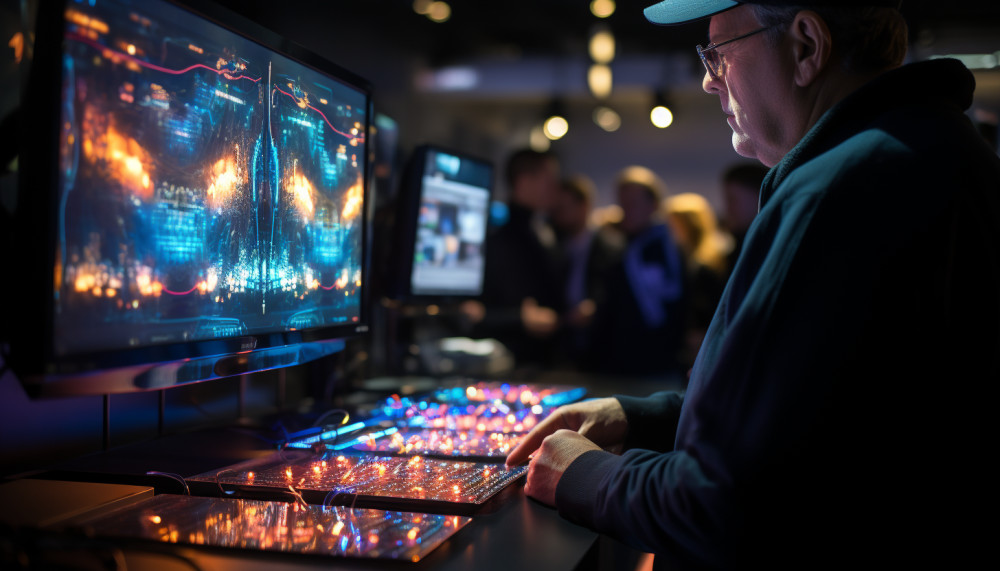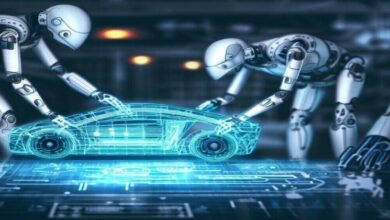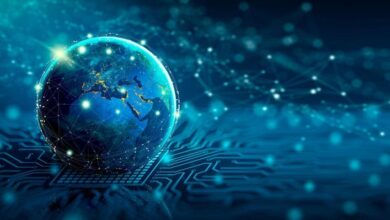Next-Gen Innovation Unleashed


The landscape of human progress is perpetually shifting, but we are currently witnessing an acceleration unlike any other in history. We have moved beyond the era of single, discrete inventions and into a new paradigm where technological frontiers are converging, amplifying each other’s power to solve the world’s most complex challenges. This is not merely an evolution; it is a fundamental transformation in how we create, interact, and perceive reality itself. This article delves deep into the heart of this revolution, exploring the key domains where next-generation innovation is being unleashed, reshaping industries, societies, and the very fabric of our future.
A. The Confluence of Mind and Machine: The Brain-Computer Interface (BCI) Revolution
For decades, the idea of controlling machines with our thoughts was confined to the realm of science fiction. Today, it is a rapidly advancing scientific reality. Brain-Computer Interfaces (BCIs) stand at the precipice of unleashing a new chapter in human capability, promising to redefine medicine, communication, and human potential.
A. The Fundamental Technology: At its core, a BCI is a communication pathway that translates the brain’s electrochemical signals into digital commands that an external device can execute. Early systems were often invasive, requiring surgical implantation. However, next-gen innovation has dramatically advanced non-invasive and minimally invasive techniques. These systems use sophisticated arrays of electrodes (in headsets or even earbuds) and powerful machine learning algorithms to interpret brainwave patterns, such as those associated with the intention to move a limb or formulate a word.
B. Restoring Lost Functions: The Medical Miracle: The most profound and immediate impact of BCIs is in the medical field. They are unlocking possibilities that were once considered impossible.
-
Mobility and Independence: For individuals with paralysis, spinal cord injuries, or neurodegenerative diseases like ALS, BCIs offer a new lease on life. Researchers have successfully enabled patients to control robotic arms, cursors on a screen, and even their own exoskeletons purely through neural signals. This restores a degree of autonomy, allowing them to interact with their environment, communicate, and perform basic tasks independently.
-
Curing Neurological Disorders: BCIs are being developed to form “closed-loop” systems that can detect and counteract the abnormal neural activity associated with conditions like epilepsy or Parkinson’s disease. By predicting a seizure or tremor, the BCI can trigger a responsive electrical stimulation to suppress the event before it manifests, offering a dynamic and personalized treatment.
-
Sensory Restoration: Pioneering work is underway to create BCIs that can restore sight to the blind. By bypassing damaged eyes and directly stimulating the visual cortex with camera-derived data, these systems can create a form of artificial vision, allowing users to perceive basic shapes, letters, and navigate their surroundings.
C. Augmenting Human Potential: The Future of Work and Play: Beyond restorative medicine, BCIs hold the potential to augment cognitive and physical abilities for the general population.
-
Hyper-Efficient Communication: Imagine communicating a complex idea or a set of data to a colleague instantly, without typing a single word or speaking a sentence. Next-gen BCIs could facilitate direct brain-to-brain communication, revolutionizing collaboration and the speed of knowledge transfer.
-
Enhanced Learning and Skill Acquisition: What if you could learn a new language or a complex motor skill like playing a musical instrument at an accelerated rate? BCIs could one day optimize brain states for learning, reinforcing neural pathways to make the acquisition of new knowledge and skills more efficient.
-
Immersive Entertainment: The ultimate virtual reality experience would be one that interacts directly with your nervous system. BCIs could create fully immersive digital worlds where you can feel the virtual wind on your skin or taste digital food, blurring the lines between the physical and digital realms in entertainment.
B. The Molecular Frontier: Nanotechnology and Materials Science
While BCIs work on a macroscopic scale, another revolution is occurring at the atomic and molecular level. Nanotechnology—the manipulation of matter on a scale of 1 to 100 nanometers—is unleashing innovations with monumental implications across every sector.
A. The Power of Scale: To appreciate nanotechnology, consider that a sheet of newspaper is about 100,000 nanometers thick. At this scale, materials exhibit unique physical, chemical, and biological properties that they do not possess in their bulk form. Gold nanoparticles, for instance, can appear red or purple and are highly reactive, making them useful in medical applications and sensors.
B. Transformative Applications in Medicine (Nanomedicine):
-
Targeted Drug Delivery: One of the most promising applications is the use of nanoparticles as “magic bullets” for drug delivery. These microscopic carriers can be engineered to seek out and attach specifically to cancer cells or diseased tissue, delivering a potent dose of medication directly to the target while minimizing the devastating side effects of conventional chemotherapy on healthy cells.
-
Advanced Diagnostics and Biosensors: Nanosensors can detect disease biomarkers at an incredibly early stage, often long before symptoms appear. Imagine a small patch or even a tattoo that continuously monitors your blood for the first signs of illness, sending alerts to your doctor in real-time for preemptive care.
-
Regenerative Medicine: Nanofiber scaffolds that mimic the body’s natural extracellular matrix are being used to guide the growth of new tissues—from skin and cartilage to more complex organs. This brings the dream of lab-grown organs for transplantation closer to reality.
C. Revolutionizing Industries and Sustainability:
-
Next-Gen Electronics: As traditional silicon-based chips approach their physical limits, nanotechnology offers a path forward. Carbon nanotubes and graphene (a one-atom-thick layer of carbon) are being developed to create faster, smaller, and more energy-efficient transistors, flexible displays, and powerful quantum computers.
-
Environmental Remediation: Nanomaterials are incredibly effective at cleaning up pollution. Nanoparticles can be designed to catalyze the breakdown of toxic contaminants in soil and groundwater or to capture carbon dioxide directly from the atmosphere, offering powerful tools in the fight against climate change.
-
Materials with Super Properties: From self-healing materials that repair their own cracks, to super-strong and lightweight composites for aerospace and automotive industries, to surfaces that are permanently clean and bacteria-resistant, nanotechnology is engineering a new generation of materials with previously unimaginable properties.

C. The Symbiotic Society: The Internet of Things (IoT) and Smart Ecosystems
The first wave of the internet connected people. The next-gen wave is connecting everything else. The Internet of Things (IoT) refers to the vast and growing network of physical objects—from toasters to turbines—embedded with sensors, software, and connectivity to exchange data. This is unleashing an era of intelligent, responsive, and symbiotic environments.
A. The Architecture of an Intelligent World: The power of IoT lies not in individual devices, but in the ecosystem they create. It consists of:
-
The Sensing Layer: Billions of sensors collecting data on temperature, motion, pressure, light, and more.
-
The Network Layer: Communication protocols (like 5G and Wi-Fi 6) that transmit this data reliably and with ultra-low latency.
-
The Data Analytics Layer: Cloud platforms and AI that process the colossal streams of data (Big Data) to identify patterns, generate insights, and make autonomous decisions.
B. Building Smarter Cities (The Urban Nervous System): Next-gen IoT is transforming urban centers into efficient, livable, and sustainable “smart cities.”
-
Intelligent Traffic Management: Connected sensors and cameras can monitor traffic flow in real-time, dynamically adjusting traffic light patterns to reduce congestion, prioritizing emergency vehicles, and guiding drivers to available parking spots, thereby cutting emissions and commute times.
-
Resource Management: Smart grids balance electricity supply and demand, while smart water sensors detect leaks in municipal systems instantly, conserving vital resources. Smart waste bins can signal when they need to be emptied, optimizing collection routes.
-
Public Safety and Security: Networks of sensors can detect gunshots, monitor air quality for pollutants, and manage public lighting to improve safety while saving energy.
C. Optimizing Enterprises and Supply Chains:
-
Precision Agriculture: IoT sensors in fields monitor soil moisture and nutrient levels, enabling automated, precision irrigation and fertilization. Drones survey crops for health, leading to higher yields with fewer resources.
-
Predictive Maintenance: In manufacturing and logistics, sensors on machinery monitor for vibrations, heat, and acoustic signatures that indicate imminent failure. This allows for maintenance to be scheduled just in time, preventing costly downtime and accidents.
-
Transparent Supply Chains: From farm to fork or factory to floor, IoT tags can track the location, condition, and authenticity of products throughout the entire supply chain, ensuring freshness, reducing loss, and combating counterfeiting.
D. The Computational Leap: Quantum Supremacy and Beyond
Perhaps the most mind-bending frontier of next-gen innovation is quantum computing. While classical computers use bits (0s and 1s), quantum computers use quantum bits or “qubits,” which can exist in a state of 0, 1, or both simultaneously (a phenomenon called superposition). This allows them to solve certain types of problems with unimaginable speed.
A. Why It’s a Game-Changer: For many everyday tasks, your laptop is fine. But for problems involving a vast number of variables and possibilities, classical computers struggle. Quantum computers excel in this space.
-
Drug Discovery and Materials Science: They can model the behavior of molecules at an atomic level, dramatically accelerating the discovery of new pharmaceuticals, catalysts, and super-materials. This could lead to cures for diseases and revolutionary new batteries.
-
Cryptography and Optimization: Quantum computers could break current encryption standards, necessitating a shift to quantum-resistant cryptography. Conversely, they could solve incredibly complex logistical optimization problems for global shipping, financial portfolio management, and energy distribution, saving billions of dollars and reducing environmental impact.
B. The Current State and Challenges: While “quantum supremacy” (the point where a quantum computer outperforms a classical one on a specific task) has been demonstrated, we are in the Noisy Intermediate-Scale Quantum (NISQ) era. Current machines are prone to errors and require extremely cold temperatures to operate. The next-gen innovation in this field is focused on error correction, increasing qubit stability, and developing practical algorithms to move from laboratory curiosities to real-world problem-solving.
Conclusion: Navigating the Unleashed Future
The convergence of these next-generation technologies—BCIs, nanotech, IoT, and quantum computing—is creating a feedback loop of innovation that is fundamentally reshaping our world. The potential for solving humanity’s grand challenges in health, climate, and resource scarcity is immense. However, this unprecedented power comes with profound responsibilities. It forces us to confront complex ethical questions about privacy, equity, human identity, and the very definition of consciousness. The innovation has been unleashed; our task now is to guide it with wisdom, foresight, and a unwavering commitment to creating a future that is not only technologically advanced but also equitable, humane, and sustainable for all.




